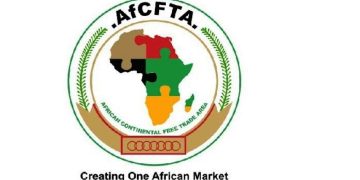Nigeria received over 40% per cent of Sub-Saharan Africa’s share of remittance from the world bank.
According to a official report by the bank, it recorded $540 billion in 2020 remittance flows to low- and middle-income countries, 1.6 per cent below the 2019 total of $548 billion.
The report titled ‘Migration and Development Brief’ released in Washington D.C. on Wednesday provides updates on global trends in migration and remittances.
It said despite COVID-19, remittance flows remained resilient in 2020, registering a smaller decline than previously projected.
“The decline in recorded remittance flows in 2020 was smaller than the one during the 2009 global financial crisis at 4.8 per cent,” it stated. “It was also far lower than the fall in Foreign Direct Investment (FDI) flows to low- and middle-income countries, which, excluding flows to China, fell by over 30 per cent in 2020.
“As a result, remittance flows to low- and middle-income countries surpassed the sum of FDI of $259 billion and overseas development assistance of $179 billion in 2020.”
The brief said that the main drivers for the steady flow included fiscal stimulus that resulted in better-than-expected economic conditions in host countries and a shift in flows from cash to digital and from informal to formal channels.
It added that cyclical movements in oil prices and currency exchange rates were also responsible.
According to it, the true size of remittances, which includes formal and informal flows, is believed to be larger than officially reported data, though the extent of the impact of COVID-19 on informal flows is unclear.
It also noted that with global growth expected to rebound further in 2021 and 2022, remittance flows to low- and middle-income countries were expected to increase by 2.6 per cent to $553 billion in 2021 and by 2.2 per cent to 565 billion dollars in 2022.
It added that the relatively strong remittance flows during the COVID-19 crisis also highlighted the importance of timely data availability.
“Given its growing significance as a source of external financing for low- and middle-income countries, there is a need for better collection of data on remittances, in terms of frequency, timely reporting and granularity by corridor and channel.”
Highlighting regions, it said remittance inflows rose in Latin America and the Caribbean with a record of 6.5 per cent, South Asia 5.2 per cent and the Middle East and North Africa 2.3 per cent.
However, remittance flows fell for East Asia and the Pacific, which recorded 7.9 per cent, while for Europe and Central Asia, 9.7 per cent was recorded.
For sub-Saharan Africa, it said a 27.7 per cent decline in remittance flows to Nigeria in 2020 resulted in the decline of remittances by 12.5 per cent to sub-Saharan Africa to $42 billion.
It disclosed that Nigeria alone accounted for over 40 per cent of remittance flows to the region. It, however, said excluding Nigeria, remittance flows to sub-Saharan Africa increased by 2.3 per cent.

































